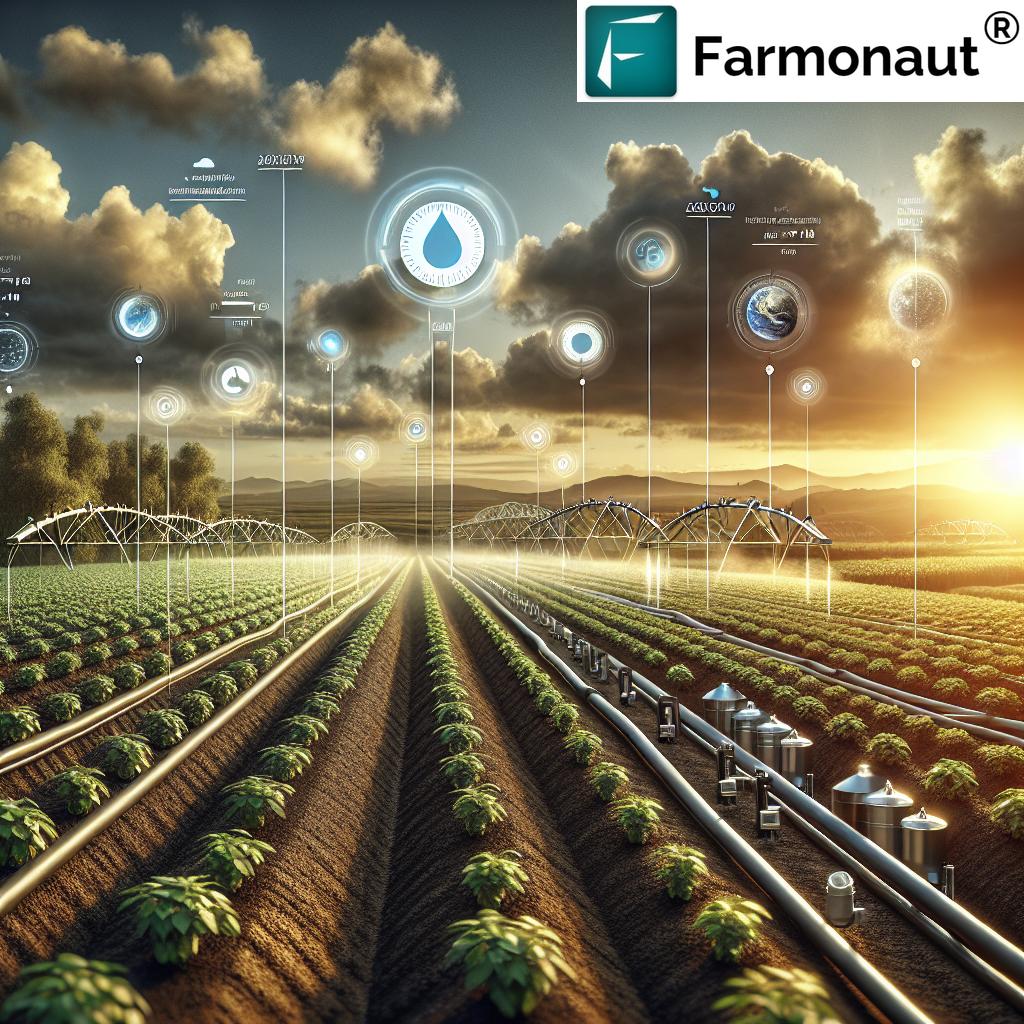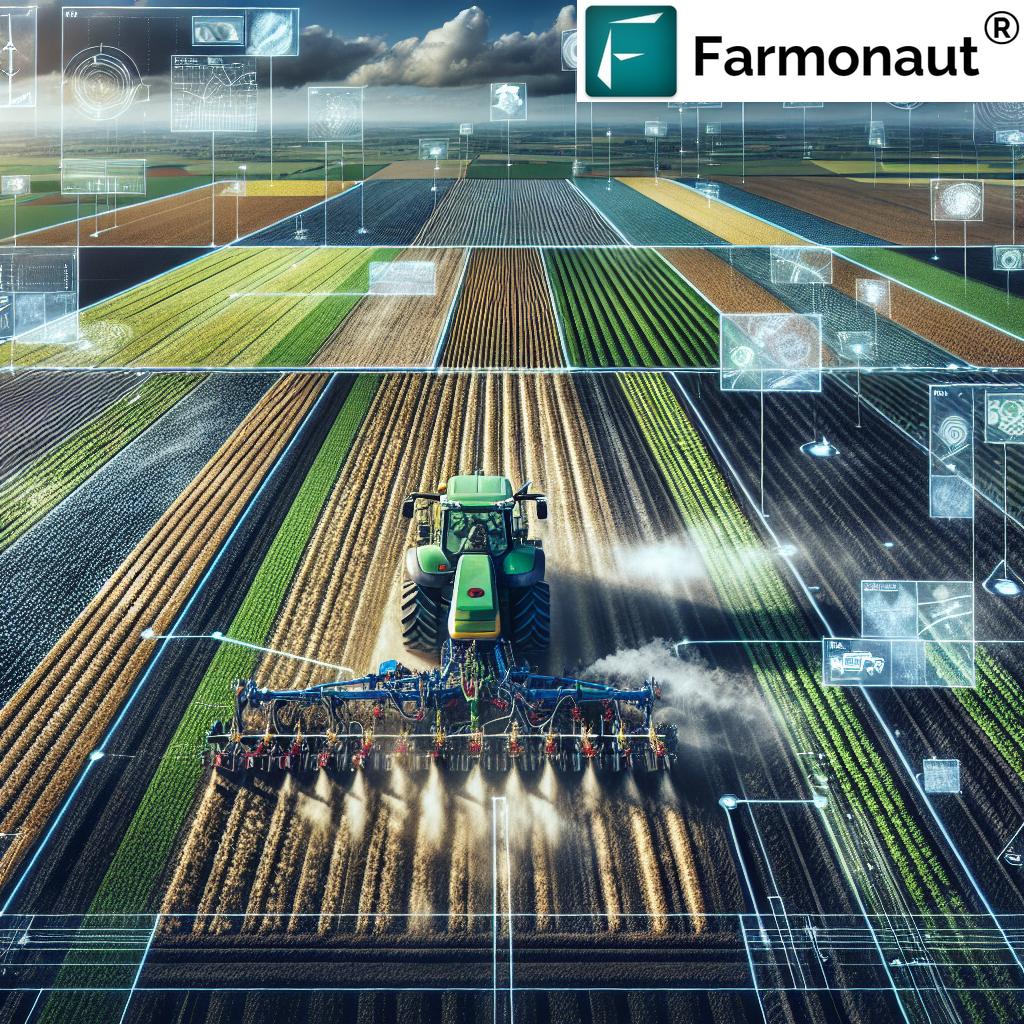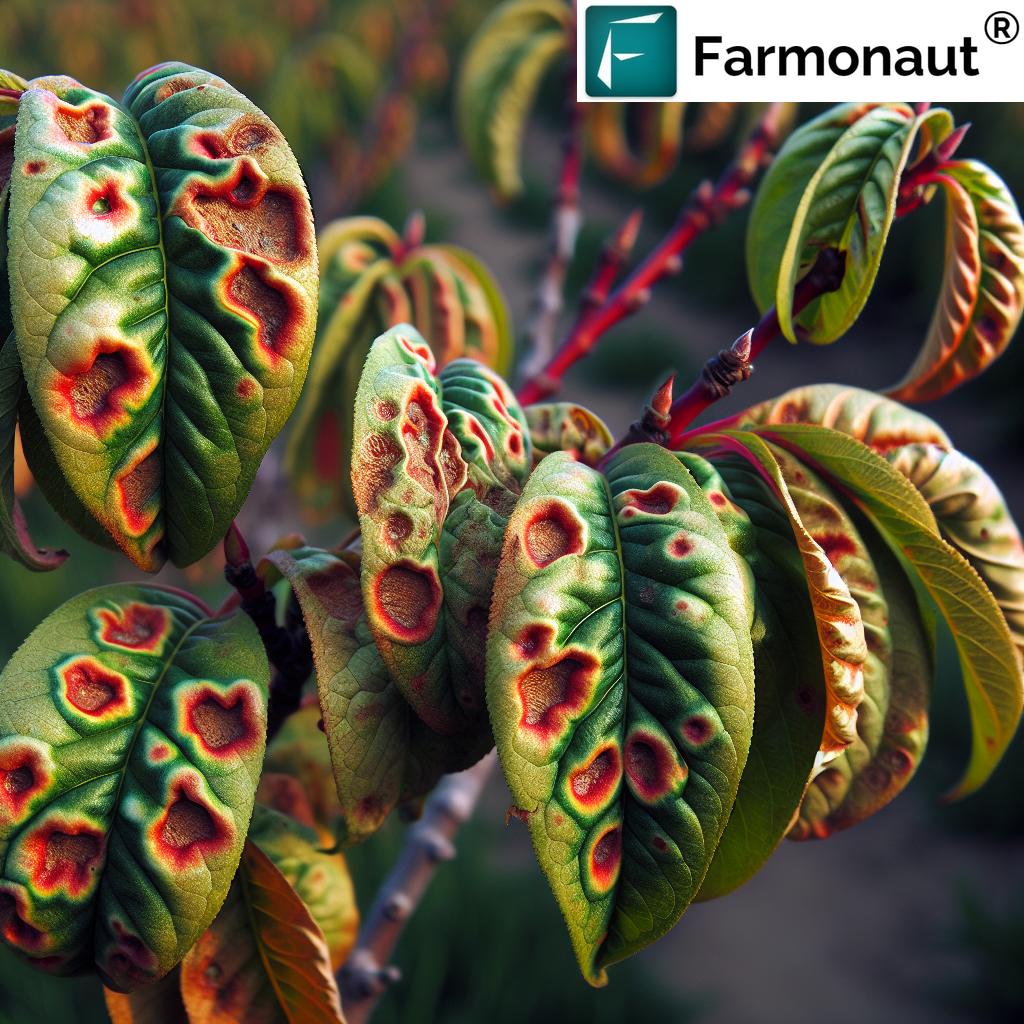New Agric Machines 2026: Smart Farming Innovations
“Over 60% of new farm machines in 2025 feature automated precision planting technology.”
Table of Contents
- Agricultural Machinery: Transforming Farming in 2025–2026
- Why Smart Farming Innovations Matter in 2026
- Categories of New Agricultural Machines in 2026
- Integrating Satellite, AI, and IoT: The New Norm
- Autonomous and Robotic Farming Machines
- Precision Agriculture: The Role of Data & Sensors
- Trending Techniques & Technologies for 2026
- Sustainability: The Eco-Impact of Smart Machines
- How Farmonaut Empowers Smart Farming Innovation
- Comparison Table: New Machines & Innovations (2026)
- Challenges to Smart Agricultural Machinery Adoption
- What to Expect: Future Trends Beyond 2026
- FAQ: Smart Farming Machines 2026
- Conclusion & Key Takeaways
- Farmonaut Subscriptions & API Access
Agricultural Machinery: Transforming Farming in 2025–2026
The landscape of agriculture is rapidly evolving, with agric machines and new agricultural machines standing at the forefront of smart farming transformation as we enter 2025 and approach 2026. Worldwide, farmers are embracing advanced machinery, digital farming machines, and integrated technologies to overcome challenges such as labor shortages, climate change, and the ever-increasing demand for sustainable food production.
Modern machines used in agriculture encompass a broad range of equipment—including tractors, harvesters, seed drills, sprayers, and advanced irrigation systems. These machines are now being transformed by AI, IoT, GPS, and other digital advancements into integrated, efficiency-boosting tools for smart farming.
Farmers and agricultural businesses who rely on these rapid advances see benefits in increased productivity, optimized resource use, improved crop yield, and minimized environmental impact. As we look towards 2026, it is clear: the future of machinery in agriculture will be smarter, more sustainable, and crucially data-driven.
Why Smart Farming Innovations Matter in 2026
In today’s agricultural landscape, the urgency for innovation is driven by:
- Population growth – The global demand for food continues to rise, requiring higher productivity from the same or fewer resources.
- Climate change & environmental pressures – Sustainable practices and machines that reduce emissions, waste, and degradation are now standard expectations.
- Labor shortages – Autonomous machines reduce dependence on human labor, especially in rural areas with widening labor gaps.
- Need for efficiency – Farmers must optimize every operation (planting, fertilizing, harvesting, irrigation) for cost and environmental impact.
- Data-driven decisions – Digital agric machines provide real-time insights, allowing for actual on-field adjustments and streamlined crop management.
Smart farming incorporates connectivity, artificial intelligence, robotics, and satellite data—making 2025 and 2026 milestones in the evolution of agric machinery. This wave of innovation is not about replacing tradition but reshaping agricultural practices for efficiency, resilience, and sustainability.
Categories of New Agricultural Machines in 2026
Modern farming machines now encompass a broad range of specialized equipment, all designed to meet specific needs for 2026 and beyond:
1. Tractors—Traditional to Smart Autonomous Powerhouses
- Smart tractors are digitally connected, featuring GPS-guided precision operations that reduce overlaps and optimize fuel efficiency.
- Autonomous or semi-autonomous tractors (operator-optional) enable 24/7 operation for timely planting, fertilization, and harvesting—regardless of weather or daylight.
- In 2026, smart tractors are projected to cut fuel use by up to 30% with advanced efficiency tech.
2. Harvesters & Combines—Advanced Crop-Handling Machines
- Robotic self-driving combines streamline grain, fruit, and vegetable harvesting, incorporating AI algorithms for optimal routing and minimal crop loss.
- Sensor-equipped harvesters evaluate crop maturity and adjust settings for maximum yield and efficiency.
3. Seeders & Planters—Precision Planting Machines
- Automated seed drills leverage data from field sensors, weather APIs, and satellite imagery to refine planting patterns and depth for each row and seed.
- This tech reduces input costs, improves germination rates, and maximizes yield potential.
4. Sprayers & Applicators—Targeted Agrochemical Use
- Electrostatic and AI-controlled sprayers analyze crop health data, applying fertilizer and pesticide with pinpoint accuracy to problem areas only, greatly reducing chemical waste and environmental impact.
5. Drones & Robots—Monitoring and Management
- Drones equipped with multispectral cameras and AI analyze field conditions, plant health, and detect pests, disease, or nutrient deficiencies much faster than human scouting.
- Robots are now used for weeding, transplanting, and specialty crop harvesting, especially where labor is scarce.
6. Irrigation Systems—Intelligent Water Delivery
- Dynamically controlled irrigation systems use soil sensors, local weather data, and predictive analytics to deliver exactly the right amount of water—eliminating over- or under-irrigation and boosting water-use efficiency for sustainability.
Integrating Satellite, AI, and IoT: The New Norm
It’s no exaggeration to say that the most significant leap in agri machines and agricultural machinery for 2025–2026 is their ability to talk to each other and to the cloud.
- Satellite monitoring—Farmers receive real-time, field-wide overviews (NDVI, soil moisture, disease warning) directly to their smartphones or PCs, enabling robust farm management without leaving the office.
- AI & Machine Learning—Systems process vast volumes of field, crop, and equipment data to refine planting, irrigation, and harvesting, automating routine decisions and freeing up resources.
- Internet of Things (IoT)—Tractors, harvesters, drones, and sensor arrays are all connected, updating their status, location, performance metrics, and predictive maintenance alerts in real-time.
For instance, a modern sprayer in 2025 might automatically pause chemical application if weather data signals imminent rain, or a combine may adjust speed and rotor settings based on live sensor feedback to avoid grain losses. This level of integration saves money, improves sustainability, and dramatically increases reliability.
Autonomous and Robotic Farming Machines: A Deep Dive
Perhaps the most notable trend as we move towards 2026 is the rapid adoption of autonomous, robotic farming machines. These advanced tools are:
- Equipped with sensors, cameras, GPS, and high-powered processors to “see,” “think,” and act independently
- Employing machine learning algorithms to continually improve efficiency and adapt to new conditions without manual reprogramming
- Operating 24/7, regardless of daylight or weather—with only minimal human intervention required for oversight or troubleshooting
Common robotic-agric equipment for 2026 includes:
- Self-driving tractors managing seeding, tillage, and spraying tasks in precise paths, eliminating overlap and reducing resource waste.
- Autonomous harvesters analyzing crop data for optimal speed, cutting height, and route planning.
- Field robots targeting invasive weeds, spraying micro-doses, or planting specialty crops in locations too tight or dangerous for conventional equipment.
In areas suffering severe labor shortages, these autonomous machines can dramatically boost operational continuity—and for large-scale or highly specialized cropping operations, they enable new levels of productivity and profit.
“By 2026, smart tractors can reduce fuel use by up to 30% with advanced efficiency systems.”
Precision Agriculture 2026: The Role of Data, Sensors, and AI
Precision agriculture is becoming the backbone for agri machines in 2026. Using GPS guidance, satellite images, IoT field sensors, and AI-driven decision support, farmers are able to:
- Map soil and crop variability down to the square meter via large-scale farm management software
- Refine planting seed rates and fertilizer distribution based on historical and real-time data
- Detect emerging diseases or nutrient deficiencies before visible symptoms occur, using multispectral and thermal imaging
- Track the movement, performance, and health of machinery via smartphone, for real-time trouble-shooting and proactive maintenance
The result? Reduced input costs, minimal environmental impact, and higher overall crop productivity and sustainability.
Trending Techniques and Technologies for 2026 Smart Farming
- Electric and Hybrid Tractors: The continued electrification of core farm equipment (tractors, utility vehicles) is set to slash greenhouse gas emissions and operational costs, providing a strong sustainability and economic argument.
- Drones for Crop Intelligence: Not just for big acreage—affordable drones now offer advanced imaging and AI analysis even for smallholder management. Crop mapping, yield estimation, and precision input management are all standardized by late 2025.
- Real-time Predictive Maintenance: IoT-enabled machine health data proactively notifies farmers of impending breakdowns. This heads off costly repairs and keeps machines running at peak efficiency.
- Data-Driven Advisory Systems: With AI like Farmonaut’s Jeevn Advisory (delivering custom recommendations based on satellite data and weather forecasts), farmers receive personalized support via app or web browser, improving farm operations and profitability.
- Blockchain Traceability: As food safety regulations increase, blockchain-driven product traceability (such as Farmonaut’s traceability platform) ensures authenticity and transparency from seed to store.
- Fleet and Resource Management: Fleet tracking platforms (like those from Farmonaut) help agriculture businesses deploy, monitor, and optimize vehicle and machine usage—for lower costs, improved safety, and maximum ROI.
Sustainability: The Environmental Impact of Smart Agricultural Machinery
Agriculture is under mounting pressure to ensure sustainable food production and lower its carbon footprint. New agricultural machines in 2025–2026 answer this with:
- Precise resource allocation (water, fertilizer, pesticide) minimizes waste and runoff, safeguarding local water supplies and soil health
- Electric and low-emission engines reduce on-farm CO2 emissions
- Blockchain traceability streamlines supply chains, reducing fraud and enhancing quality control for food safety and eco-certifications
- Environmental monitoring tools (like those from Farmonaut) help track actual carbon impact—see our carbon footprinting solution for more details.
- Regenerative agriculture techniques—supported by AI and smart machines—build soil health, biodiversity, and climate resilience.
How Farmonaut Empowers Smart Farming Machines & Management
At Farmonaut, we’re dedicated to enabling farmers and agribusinesses to get the most out of new agricultural machines in 2026. Here’s how our platform supports the smart farming revolution:
- Real-time satellite monitoring: We deliver up-to-date vegetation health, NDVI, soil moisture, and structural data via app and web interface—allowing instant field checks and smart resource allocation.
- AI-driven advisory (Jeevn): Our AI analyzes multi-source data to provide tailored, actionable strategies across planting schedules, crop health, irrigation, and disease risk—all via easy-to-use dashboards.
- Blockchain-based traceability: Our tech ensures all stakeholders can validate production source and input application, supporting sustainable and transparent supply chains.
- Environmental impact tracking: Detailed analytics help monitor and minimize the carbon and ecological footprint of mechanized operations.
- Fleet & equipment resource management: We provide tools so you can manage your machinery, schedule predictive maintenance, and optimize operational efficiency.
Learn more or access our platform via:



For API integration and automation:
Our API Platform (Developer Docs)
Comparison Table: New Agricultural Machines (2026) and Their Key Innovations
| Machine Name | Type/Function | Estimated Year of Release | Notable Technology/Innovation | Estimated Efficiency Gain (%) | Sustainability Impact | Estimated Price Range (USD) |
|---|---|---|---|---|---|---|
| SmartTrac 9000 AI | Autonomous Tractor | 2025 | AI Navigation, IoT, Self-optimizing | 30 | Up to 30% less fuel use, reduced soil compaction | $175,000–$210,000 |
| AgriBot Drone V2 | Monitoring Drone | 2026 | Multispectral Imaging, AI Crop Analysis | 20 | Targeted spraying, reduced pesticide use | $12,000–$18,000 |
| HarvestX Ultra | Autonomous Combine Harvester | 2025 | GPS, Adaptive AI Sensing, Remote Operation | 22 | Minimizes grain loss, optimized fuel use | $350,000–$475,000 |
| EcoSeedPro 500 | Precision Seeder | 2026 | Variable Rate Seeding, Live Soil Analytics | 28 | Saves up to 20% on seed & fertilizer, less runoff | $35,000–$43,000 |
| SpraySense X | Smart Sprayer | 2025 | Geo-referenced, Sensor-Driven, Auto Dosing | 27 | Minimizes chemical use, prevents over-application | $42,000–$57,000 |
| ReGen Irrigator Lite | Autonomous Drip Irrigation | 2026 | AI Water Plan, Soil Moisture Sensors, IoT Telemetry | 34 | 90% water savings, improved drought resilience | $19,000–$29,000 |
| MiniWeedBot S | Field Robot—Weeding | 2025 | Machine Vision, Autonomous Navigation | 15 | Cuts herbicide use by up to 70% | $7,000–$12,000 |
*Estimated prices and specs based on available industry data for 2025–2026.
Challenges to Smart Agricultural Machinery Adoption
Despite remarkable advancements, widespread adoption of new agricultural machines by 2026 faces several obstacles:
- High initial investment costs: State-of-the-art autonomous and AI-driven equipment can be prohibitively expensive for many smallholder or developing region farmers.
- Technical skill gaps: Effective use of digital agricultural machinery and farm management platforms requires training, literacy, and ongoing support.
- Infrastructure requirements: Reliable internet, power, and broadband connectivity are still evolving in some rural locations, limiting the reach of connected machines.
- Data privacy and security: Increased data sharing introduces new challenges around farm data ownership, security, and regulatory compliance.
- Maintenance logistics: Predictive maintenance reduces breakdowns, but servicing advanced machines often means longer lead times and more specialized parts.
Farmonaut’s platform can help by facilitating fleet and equipment resource management, but user training remains vital. - Access to financing: Yet, with platforms like Farmonaut’s satellite-driven crop loan and insurance verification solution, more farmers will be able to lower risk and secure the investment needed for the latest machinery.
- Adoption curve: Early adopters benefit first, but mainstream diffusion takes years due to conservative business practices and regulatory hurdles.
What to Expect: Future Trends Beyond 2026
By 2026 and beyond, several trends are set to further transform agricultural practices and machinery:
- Continued collaboration between digital technologies and traditional machinery will make smart agri machines accessible to medium and small-scale operators, not just industrial farms.
- Integration of AI assistants (like Farmonaut’s Jeevn AI) with tractor and combine interfaces, giving live suggestions for everything from seed rates to field routes and input calibration.
- Expansion of mobile and remote-access platforms, offering full-farm visibility and control via smartphone for even the most remote operations.
- Blockchain—As regulatory and market demand grows for food origin and input traceability, blockchain-enabled supply chains will become the norm, with digital validations at every stage.
- New business models—From machinery-sharing co-ops, on-demand rental, and government support, there are increasing opportunities for both big and small farmers to leverage the best machines available.
- Environmental reporting—Real-time carbon footprint monitoring, resource tracking, and impact analytics will allow farms to better comply with regulatory standards and sustainability certifications.
- Remote algorithms and autonomous fleets: Expect fleets of driverless, AI-directed machinery—drones, harvesters, tractors—operating on shared data, managed with minimal human supervision, to become widespread.
FAQ: Smart Agricultural Machines 2026
What are the main benefits of new agricultural machines in 2026?
Benefits include increased operational efficiency, reduced labor requirements, optimized input use (water, fertilizer, chemicals), enhanced sustainability, real-time data insights, and greater productivity across multiple crop types and regions.
How do AI, IoT, and satellite data work together in smart farming machines?
AI analyzes data collected by IoT sensors on tractors, harvesters, drones, and irrigation systems—satellite imagery adds another layer by monitoring entire fields at once. This integration helps optimize planting schedules, input application, equipment management, and predictive maintenance.
Are these new machines accessible to smallholder farmers?
While high costs remain a challenge, new business models like machinery rental, cooperatives, and digital management services (for example, those offered by Farmonaut) help make advanced machinery more attainable for small and mid-size operations.
Does smart machinery really reduce environmental impact?
Absolutely. By minimizing unnecessary passes, optimizing input application, and switching to electric/hybrid engines, the latest machinery can cut emissions, reduce soil compaction, save water, and protect local ecosystems.
Can these machines operate without human intervention?
Most state-of-the-art models (especially autonomous tractors and drones) operate with minimal human oversight. However, complex or highly variable situations still benefit from expert supervision and periodic adjustment.
How does Farmonaut fit into the smart agricultural machinery revolution?
We at Farmonaut power precision farming with real-time satellite data, AI-driven advisory, blockchain traceability, and resource management tools—making it easier for farmers to maximize the value of their modern machinery and promote sustainability from the ground up.
Conclusion & Key Takeaways
New agricultural machines are transforming farming in 2025 and 2026. The integration of AI, IoT, satellite, advanced sensors, and automation is not just reshaping machinery; it is redefining what’s possible for crop management, sustainability, and productivity in agriculture. For farmers worldwide, these tools offer:
- Reliable, data-driven decisions based on real-time and predictive analytics
- Increased efficiency and resilience in face of labor shortages and climate variation
- Substantial reduction in input costs and ecological impact
While challenges such as cost, training, and infrastructure persist, access to smart farming machines and digital tools continues to grow—enabling both large-scale and smallholder farmers to reap the rewards of technology and innovation in agriculture.
Ready to harness the power of precision farming and next-generation machinery? Explore how Farmonaut empowers your farming journey—sustainably and intelligently—for 2026 and beyond.
To build your own automation or integrate AI & satellite-powered insights, check our:
Farmonaut API and
Developer Documentation
For holistic farm and resource management, see our:
Large-Scale Farm Management Platform
To track and report your greenhouse gas impact, explore:
Carbon Footprinting Tool
For secure crop traceability and food safety:
Blockchain Traceability Solution
For machinery and fleet optimization, use:
Fleet Management Module
Need satellite-based verification for loans or insurance?
Farmonaut Crop Loan & Insurance Page
Farmonaut Subscriptions & API Access
Unlock the next generation of crop and resource management with Farmonaut’s flexible subscription plans—affordable for individuals, enterprises, and government users. Scale your monitoring, automate reporting, and make data-driven decisions effortlessly:








